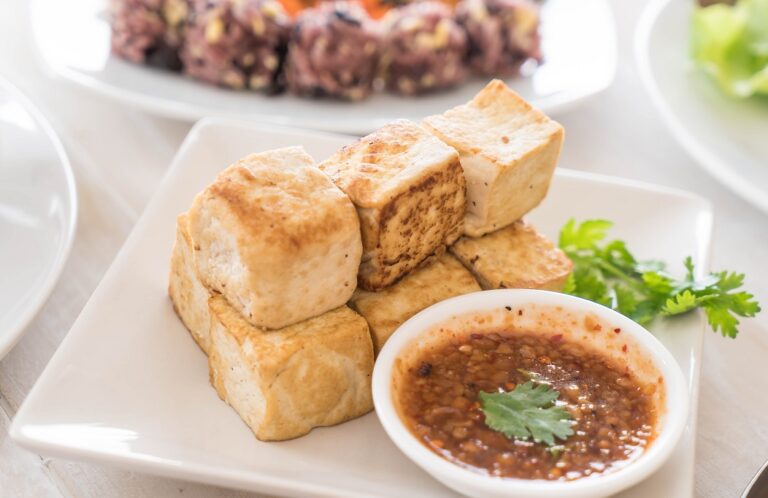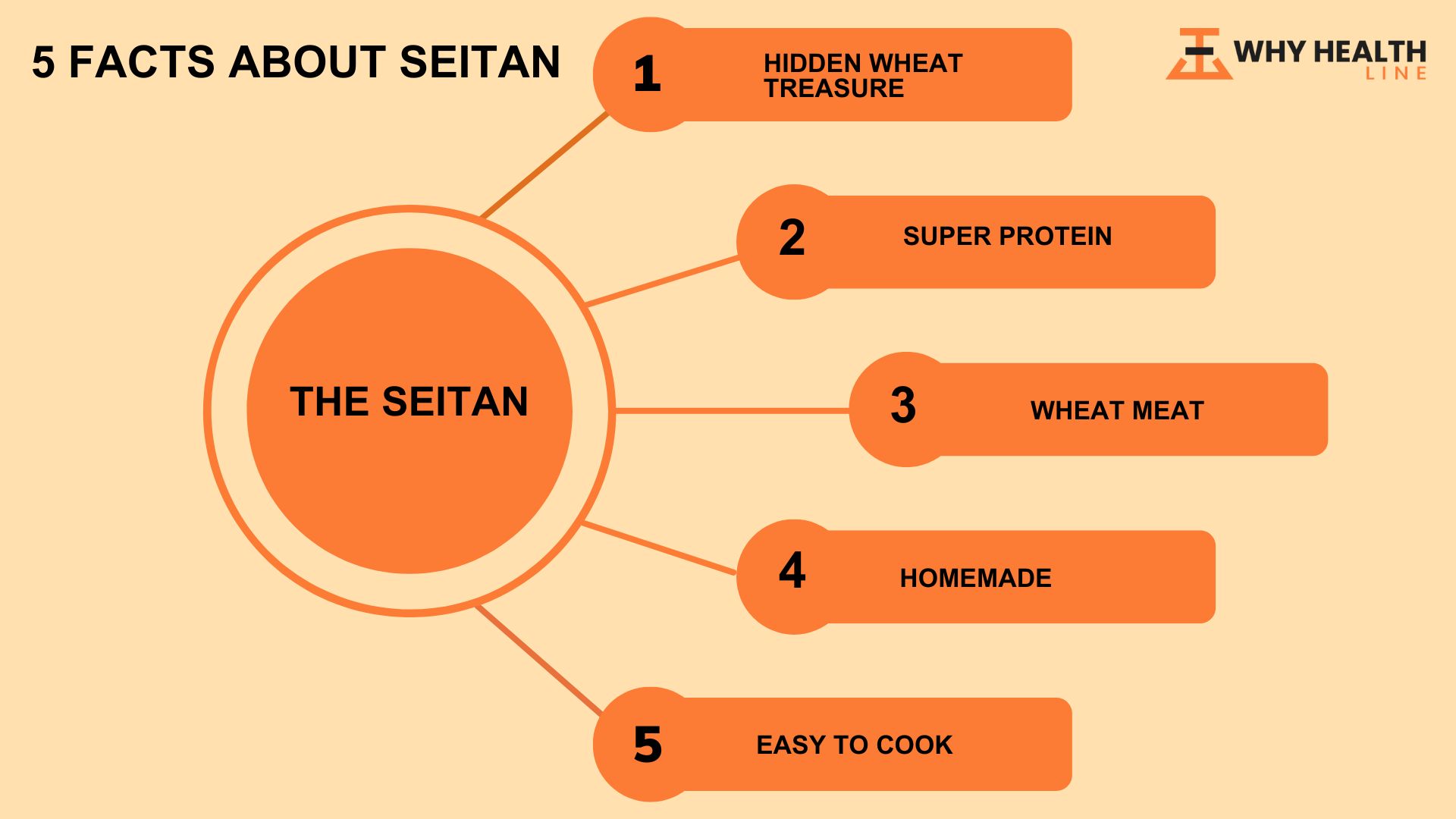
Overview
Seitan (pronounced say-tan) is a vegetarian meat substitute made from wheat gluten, also known as wheat protein or wheat meat. It is commonly used in vegan and vegetarian cooking as a high-protein, low-fat alternative to meat.
It has a dense, chewy texture and a mild flavor that absorbs the flavors of whatever it is cooked with, making it a versatile ingredient in various dishes.
It can be grilled, roasted, fried, or baked, and can be used as a meat replacement in dishes such as stir-fries, stews, sandwiches, and more.
How to Cook Seitan?
Seitan is a high-protein, wheat-based meat substitute commonly used in vegetarian and vegan cooking. Here are the basic steps for cooking seitan:
Ingredients:
- 1 cup vital wheat gluten
- 1/4 cup nutritional yeast
- 1 tsp garlic powder
- 1 tsp onion powder
- 1/2 tsp smoked paprika
- 3/4 cup vegetable broth
- 2 tbsp. soy sauce
Instructions:
Combine the vital wheat gluten, nutritional yeast, garlic powder, onion powder, and smoked paprika in a large mixing bowl.
In a separate bowl, whisk together the vegetable broth and soy sauce.
Pour the wet ingredients into the dry ingredients and stir to combine. Knead the mixture for about 5 minutes until it forms a firm, elastic dough.
Divide the dough into small portions, and flatten each into a thin patty.
Bring about 6 cups of vegetable broth to a boil in a large pot. Add the seitan patties to the broth and reduce the heat to a simmer. Cover the pot and cook for about 45 minutes.
Remove the seitan from the broth and let it cool. Once cool, you can slice or shred the seitan and use it in your favorite recipes.
You can also cook seitan by baking, frying, or grilling it. Brush it with oil and cook until golden brown and crispy.
5 Facts About Seitan
1. Hidden Wheat Treasure
Seitan is a meat substitute made from wheat gluten, also known as wheat meat or wheat protein. It has a chewy and meat-like texture, making it a popular choice for vegetarian and vegan dishes.
2. Super Protein
It is a good source of protein, with approximately 25 grams of protein per 3.5 ounces (100 grams). It also contains iron, calcium, and some B vitamins.
3. Wheat Meat
Making seitan involves mixing wheat gluten with water and other ingredients such as soy sauce, nutritional yeast, and spices. Depending on the recipe, the resulting dough is then kneaded and simmered in a broth or steamed.
4. Homemade
Many people use gluten flour to produce their seitan bread. It becomes a dough combined with water and seasonings, kneaded and fashioned into a log. It is then poached in water or another liquid until it resembles meatloaf in texture.
Natural food stores and bulk food stores both sell gluten flour. Store-bought seitan lasts around two weeks in the refrigerator, but homemade seitan can be stored there for three to four days. They can both be frozen.
5. Easy to Cook
It is versatile and can be used in various dishes, such as stir-fries, stews, sandwiches, and pizza toppings. It can also be flavored and seasoned in many different ways to mimic the taste of various types of meat.

FAQs
Can I Eat Seitan Every Day?
While seitan can be a good source of protein and other nutrients, it is optional to eat it every day, particularly if it is the sole or primary source of protein in your diet.
Here are some considerations:
- It is made from wheat gluten, so if you have gluten intolerance or celiac disease, you should avoid it.
- This is a low-fat, high-protein food, but not a complete protein, as it needs some essential amino acids that the body needs. Thus, it is best to combine it with other protein sources such as legumes, nuts, or tofu to ensure adequate protein intake.
- It is often high in sodium, commonly prepared with soy sauce or other high-sodium seasonings.
Is Seitan Healthier Than Meat?
It is a plant-based protein source made from wheat gluten, and it has become a popular meat alternative among vegetarians and vegans.
Compared to meat, It generally has fewer calories, less fat, and more protein per serving; however, whether seitan is “healthier” than meat depends on various factors, including your dietary needs, preferences, and lifestyle.
Some potential benefits of choosing Seitan over meat include:
Lower in Saturated Fat: It is generally lower than most meats, which can benefit heart health.
High in Protein: This is a complete protein source, containing all the essential amino acids your body needs. It’s also a good source of iron and other minerals.
Lower Environmental Impact: Producing seitan requires fewer resources than producing meat, making it a more environmentally sustainable option.
What Does It Taste Like?
It is a meat substitute made from wheat gluten. It has a dense, chewy texture and a savory, umami flavor that is often compared to meat. The taste of seitan can vary depending on how it is prepared and seasoned.
When cooked on its own, seitan can have a somewhat bland taste, similar to plain tofu or chicken breast. However, it readily absorbs flavors from marinades, sauces, and seasonings, which can greatly enhance its taste.
It is often used as a substitute for beef, chicken, and pork in various dishes and can be seasoned to mimic the taste of these meats.
Overall, the taste of seitan is often described as savory, meaty, and satisfying, making it a popular choice for vegetarians and vegans looking for meat alternatives.